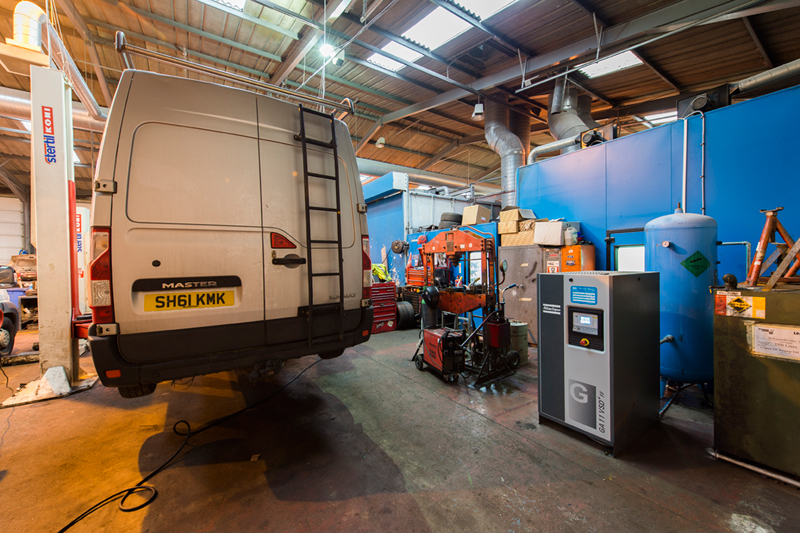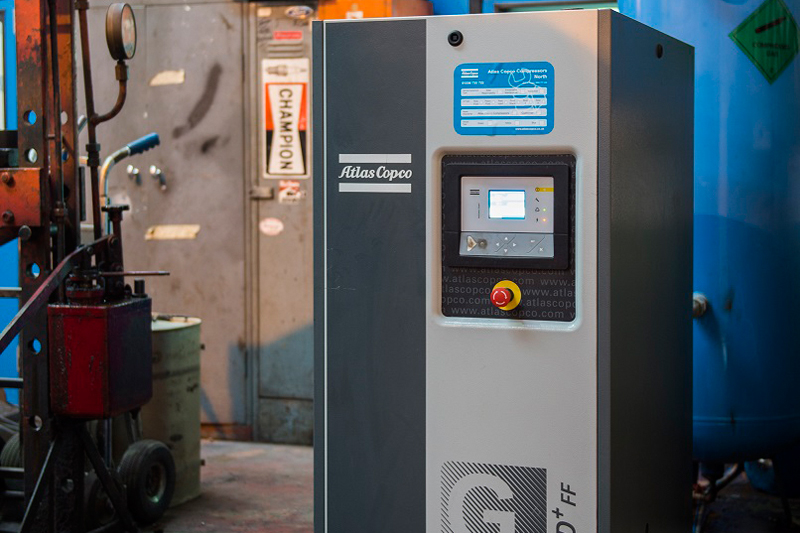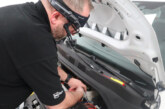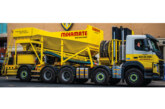
Stef Lievens, Business Line Manager for Industrial Air at Atlas Copco, compares rotary screw air compressors with alternate types.
Repair shops, tyre bays, service garages and small metalworking companies all rely on a source of compressed air to support their activities. Now, major advances in design and technology make it possible for existing and potential compressed air users to take advantage of the guaranteed reliability, efficiency and economic benefits of the latest generation of workplace rotary screw compressors.
Getting down to basics, but without too much technical detail, rotary screw compressors provide many distinct advantages over their reciprocating and vane counterparts in terms of size, air delivery, duty cycle and longevity. In addition to overall energy efficiency, rotary screw air compressors offer multiple benefits compared to other compressor technologies. These features include low noise output, light weight and small footprint for point-ofuse plug-and-play installation. They also offer continuous operation at temperatures of up to 46°C, extremely low oil-carryover into the delivered air, simplified maintenance procedures and zero loss of capacity over time.
Furthermore, smaller screw compressors can be tank-mounted to enable additional air storage capacity, while full-feature variants with an integrated dryer and oilwater separator protect the compressed air network and end-user output.
Comparing like for like
To see why the rotary screw compressor has made such progress in comparison to piston and vane technologies, it may help to examine the pros and cons of their operating principles and performances relative to the average workshop’s requirements.

The piston, or the reciprocating air compressor, has traditionally been regarded as the most economical and least expensive type of air compressor. In its simplest form, it is still the most common type found in the automotive service industry. In more demanding roles, technically advanced versions can incorporate multiple compression stages to make them particularly suitable for high-pressure applications.
However, in small to mid-range piston compressors, some major drawbacks need to be considered. For instance, they are primarily intended for intermittent use. The average piston compressor can only work for about 50 to 60% of its duty cycle, or for the amount of time a compressor can continuously operate without stopping to prevent overheating in a given period. These units require adequate cooling time between cycles, otherwise they can overheat and possibly fail. In contrast, rotary screw air compressors run cooler, and are designed to operate continuously at a 100% duty cycle.
Component wear is also an issue. Just like a vehicle engine, reciprocating compressors feature piston rings and other components that are in direct contact with each other, and suffer wear over time. With wear comes a decrease in performance, oil carryover and excessive heat generation. They tend to run hotter as efficiency decreases and operating time increases. A lubricated rotary screw compressor is designed so that the compressor oil seals the internal rotors, preventing parts from wearing out. Unlike a reciprocating compressor that loses performance with age, the rotary screw compressor can maintain the same level of performance throughout its long service life.
Rotary screw air compressors tend to deliver more air per kW of power compared to reciprocating compressors of the same size. This enables the use of a smaller rotary machine in place of its piston equivalent with the same output, contributing to significant energy savings.
A further complication is that reciprocating compressors require air tanks to reduce air pulses created in the compression process. As a result, they need to employ receivers to smooth the airflow and handle large demands from workplace air users, tools and equipment. On the other hand, rotary screw compressors do not create air pulses, and – depending on capacity – are able to deliver large volumes of air when required without the need for a reservoir. Furthermore, they are built to operate for an extensive working life without requiring major repair.

It is a similar story with rotary vane compressors. The simple vane principle has the longest track record since its introduction almost 100 years ago. However, such design longevity and simplicity does not necessarily equate to energy efficiency. Neither does it allow for a full range of capabilities in comparison to those offered by rotary screw compressors, in terms of turndown rates, speed range limitations and energy demand.
In much the same way as the piston compressor is affected by component wear, the vane operating principle involves continuous sliding in and out of the rotor vane slot within the stator casing. As a result, both the vane and slot are subject to excessive wear, eventually leading to failure of the vane and all that entails.
There are also disadvantages in terms of the vane compressor’s maximum speed, which affects output. For instance, as vane compressors rely on centrifugal force to operate, their maximum speed is limited to 1,000-1,100rpm, which is a third of that for a screw compressor air element.
It is clear to see that the innovative developments embodied in advanced rotary screw compressor technology provide a clear advantage in performance and compatibility with workshops’ needs.








